Last-Minute NYC Holiday Gift Guide 🎁
We’ve created a holiday gift guide with presents for the intrepid New Yorker that should arrive just in time—


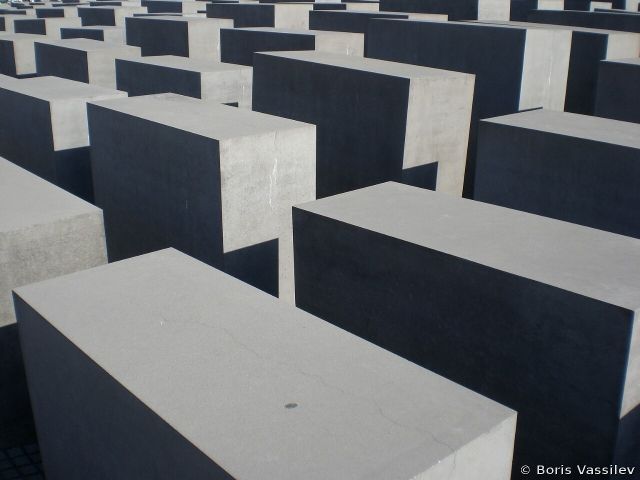
Berlin’s Memorial to the Murdered Jews of Europe could hardly have a more central and incriminating location within the German capital. Just a few blocks southeast of the Brandenburg Gate, a lasting symbol of the German nation and its strength, it is a vast grid of concrete blocks, stelae, innocuous at a distance, like a children’s maze, but intimidating upon closer inspection, as the ground between the blocks grows deeper, leaving them towering over entering visitors.
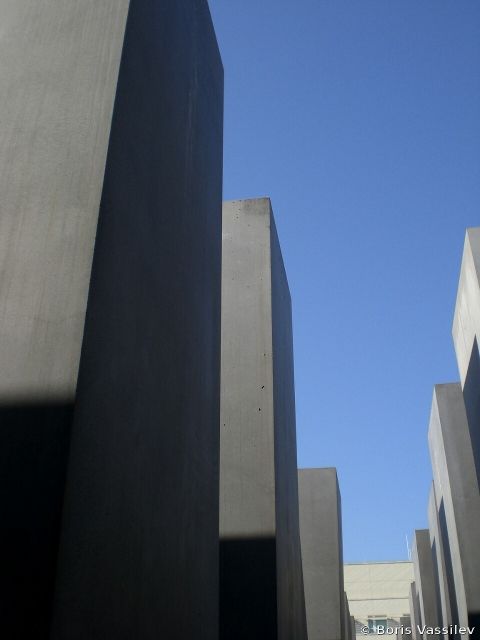 Within in the field of stelae.
Within in the field of stelae.
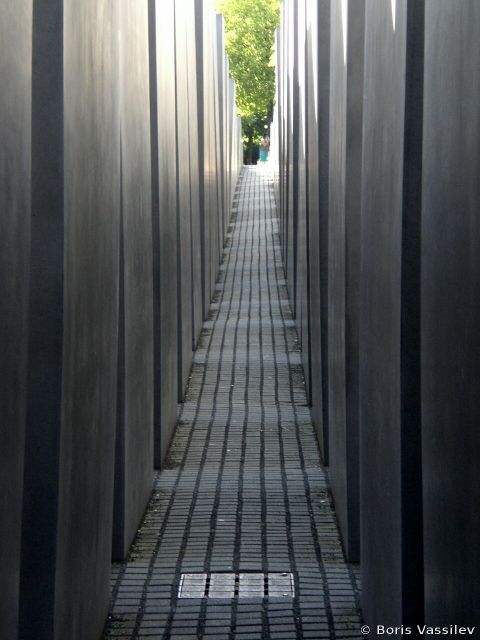 A path with trees at the end in the Memorial.
A path with trees at the end in the Memorial.
There is a human sense of instability as visitors walk between the blocks. The stelae quickly overpower the senses and instill an uneasy claustrophobia through the limited strips of vision the monument affords. No matter the location, however, there is always an end to the stelae field in the distance, small windows of trees, sunlight and warmth. The blocks themselves are mathematically organized and impressive, with rough, sharp edges, and smooth side surfaces that leave no residue on hands that run over them. Laughter, an unexpected but near-constant part of the stelae field, as uneasy visitors play hide-and-seek, is warped in echoes and difficult to locate, contributing to the isolation of walking inside. At dusk, this isolation and uneasiness, combined with fewer visitors and a breezy chill, ignites a very basic fear reflex and the entire field takes on a more sinister tone.
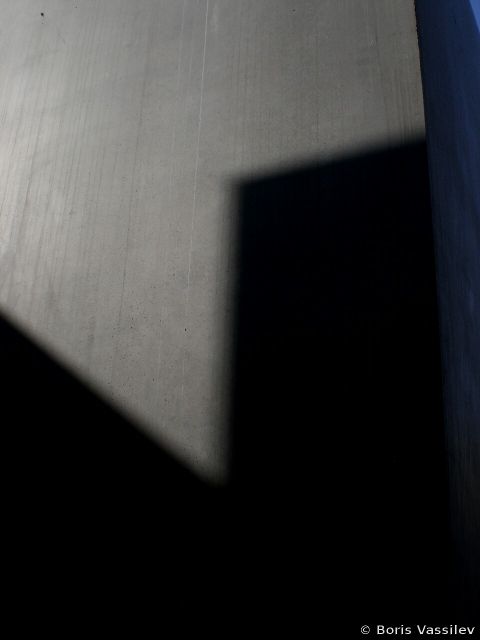
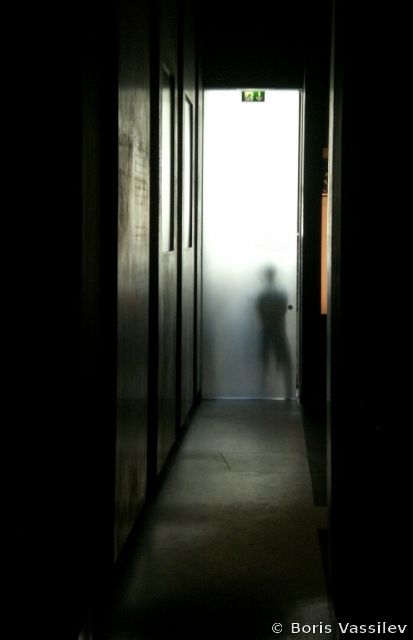
In his July 12th article for The New Yorker, Richard Brody discusses what he identifies as the “inadequacy” of the memorial as a sufficient representation of the murders of Jews during the Holocaust. I believe that Brody’s article does not do justice to the complete memorial experience. Mr. Brody seems to think that the only means of creating a lasting memory of the Holocaust that does not pale with time is to be explicit in the representation of the monument’s purpose: to create an idea for each individual Jew who was murdered during the Holocaust. It appears differently to me. Met directly with such an overwhelming factual database, if perhaps, as Mr. Brody suggests, six million road markers with names had been constructed instead of the stelae field, any visitor to a monument would have to accept the information as absolute and retain it passively: they would be given facts and therefore must accept them as such. In the current stelae memorial, an active process must take place.
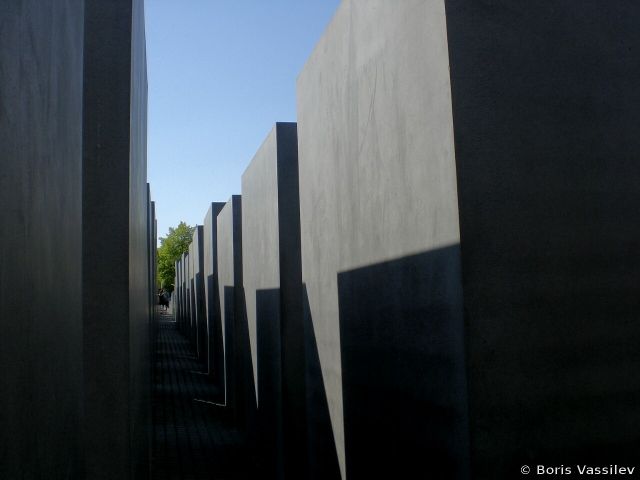
The memorial selection was the result of an exhaustive submission process, yielding a design by American architect Peter Eisenman as a final selection. Eisenman, who is famouse for his fragmenting deconstructivist design and who did not include the exhibition in his original memorial design, professes no particular opinion or even lasting investment toward his creation, instead giving it fully to the visiting public. Given the designer’s lack of commentary on intended interpretation, visitors must seek their own narratives within the stelae and forge their own discussions.
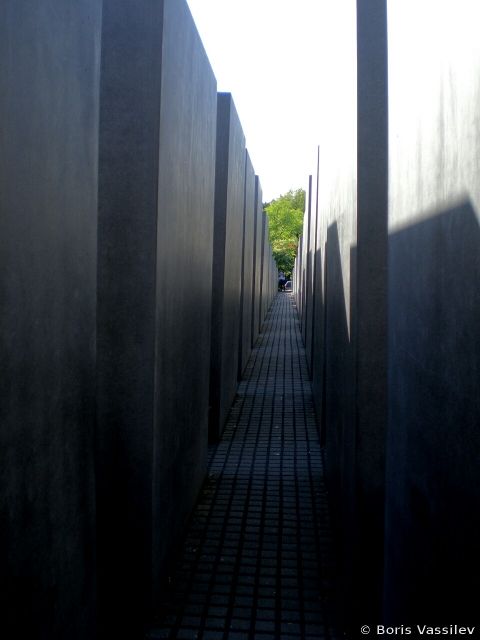
Mr. Brody finds that the exhibition built under the eastern part of the stelae field is “not easy to find” and “not integral to the display.” In my experience, this could not be farther from the truth, as it is difficult to venture through the stelae field without meeting a gate or an exit to the exhibition. The entire dynamic is quite the opposite: the stelae field is integral to the exhibition. The exhibition goes to exceptional lengths to do what Mr. Brody, as written in his article, believes lacking from the visual representation that weighs heavily above it: it creates intimate specificity with both victims and perpetrators, even going as far as to push visitors outside of the normal neutral comfort zone of museums, and into direct contact with this history.
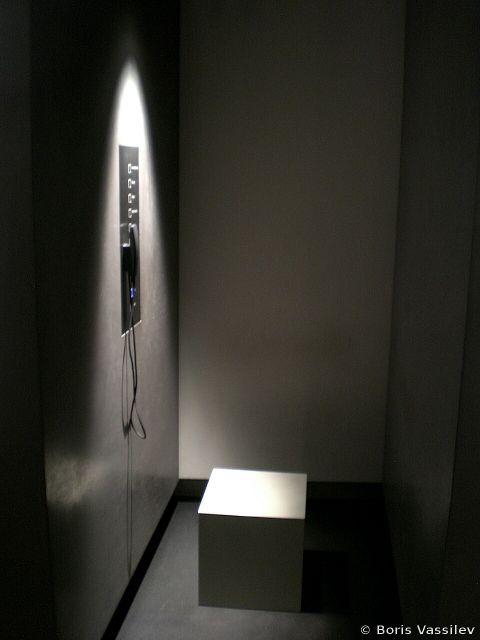 A listening booth in the exhibition under the Memorial.
A listening booth in the exhibition under the Memorial.
In all exhibits, great care is taken to identify the names and nationalities of people in and authors of photographs, torn diaries and faded letters. It is a constant reminder that the events of the Holocaust were experienced, perpetrated, documented, understood, and in many cases ignored despite the atrocity, by individual, morally-capable humans with names and histories and real lives. Nazi military men, victims and photographers under the banner of neutrality are all identified in the presented media, starkly named with nationality and title, and left as fact for the audience to process. The entire exhibition places visitors in direct contact with the past, often pushing past barriers of comfort that have been standardized, unspoken, in other Holocaust museums.
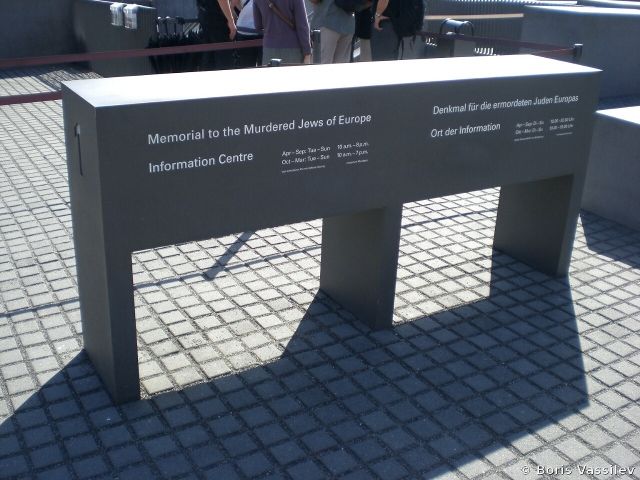 Hard to find? A marker for the entrance to the exhibition.
Hard to find? A marker for the entrance to the exhibition.
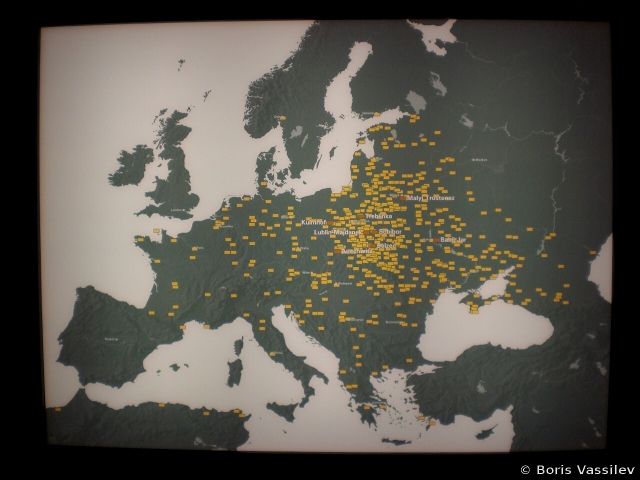
Standing over transcripts of letters on the floor of the Room of Dimensions, it is difficult to read the text without noticing one’s shadow hanging over the words, and in the Room of Sites, visitors are invited to sit in isolating, starkly lit alcoves and physically place a telephone piece against their ear to hear historical transcripts. This emphasis on the need for an active engagement with history is completed at the end of the exhibition, where visitors are invited to not only sit witness to projections of Holocaust survivor interviews, but also personally research the complete database of Holocaust victims, an incredibly detailed and exhaustive archive that attempts to coalesce all known information about victims. Throughout the exhibition, apart for the specificity of fact, is also an awareness of the gaps in fact, with small plaques explaining why photographs are missing, why it is not possible to speak about all victims in the Room of Names, and why some entries in the Holocaust database consist simply of a name and a small photograph, all other information about these people effaced by violence and time.
 Room of Records.
Room of Records.
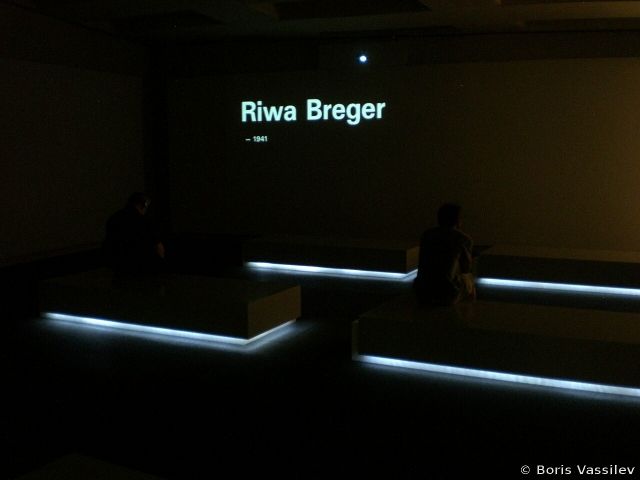 Room of Names.
Room of Names.
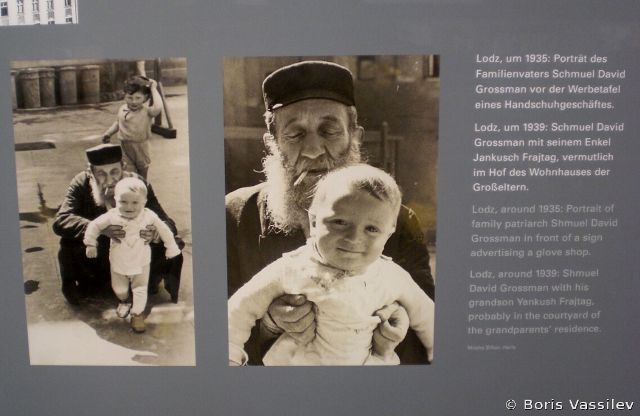 Room of Memories.
Room of Memories.
The exhibition creates a sense of uncomfortable, but necessary intimacy, and then plants visitors in the midst of the stelae field, where there is no specificity, no plaques with interpretations or statements of fact. The stelae field is an ideal, a representation designed to be filled with the ideas of the visitors, and like any ideal, it is not possible to mentally encompass or completely understand. This is its true strength, its unknowability, a catalyst for thought and discussion and memory, not a collection of facts, ones that can be glazed over because they are have already been written down.
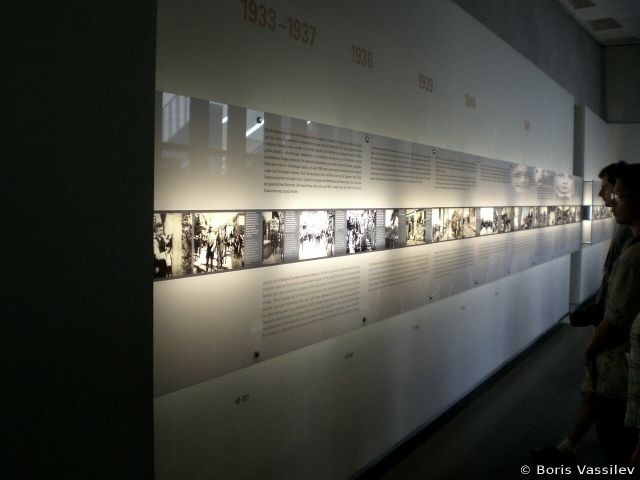 Timeline in the first hall of the exhibition.
Timeline in the first hall of the exhibition.
In another definition entirely, this is a monument of of unparalleled success. A full seven years after its commemoration, it still inspires heated discussion, both within the stelae field and in private and public forums. Mr. Brody correctly claims that the first step toward forgetting is assuming that others know the facts, and thus omitting them, but were he to fully experience the memorial and visit the exhibition, he would find that this axiom of memory and history does not apply here. The facts are there, as the medium through which they can be processed pushed from photos and dates and maps and names into real thoughts and discussions for visitors.
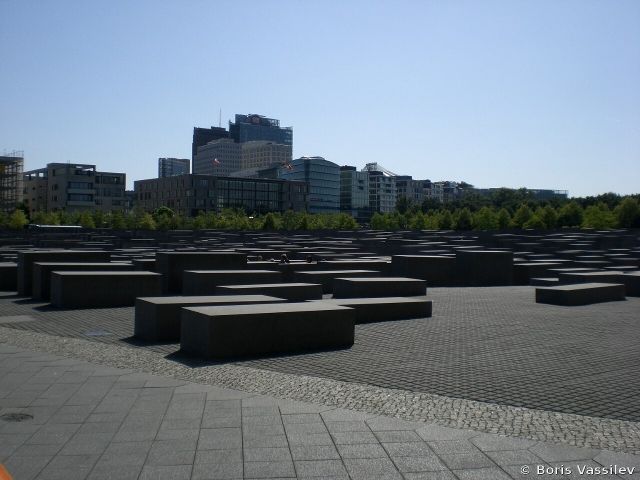 Overview of the Monument with the buildings of Potsdamer Platz behind it.
Overview of the Monument with the buildings of Potsdamer Platz behind it.
Holocaust Mahnmal [map]
Cora-Berliner-StraàÆ’à… ¸e, 10117 Berlin, Germany
+49 30 263 94336
Exhibition
Follow the author on Tumblr.
Subscribe to our newsletter